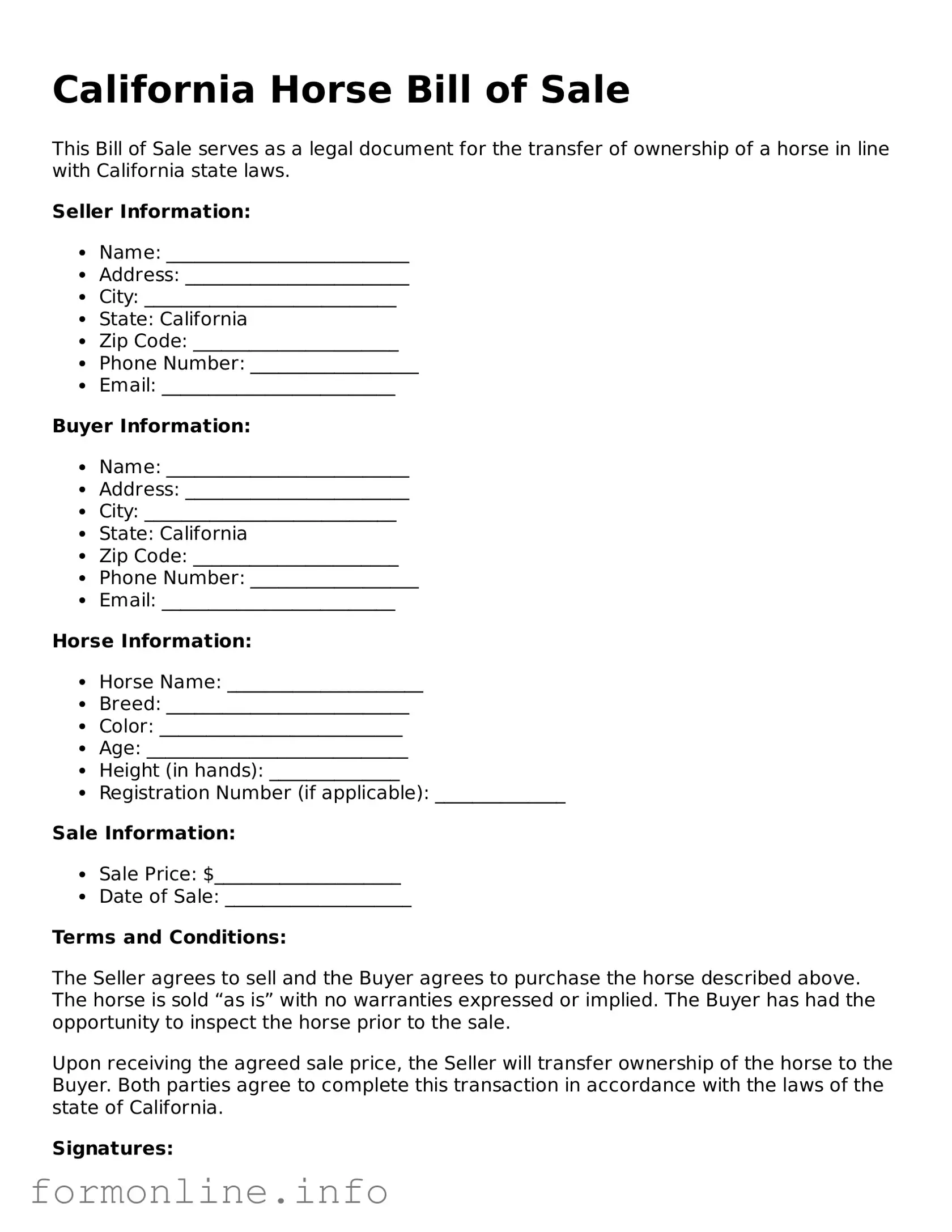California Horse Bill of Sale
This Bill of Sale serves as a legal document for the transfer of ownership of a horse in line with California state laws.
Seller Information:
- Name: __________________________
- Address: ________________________
- City: ___________________________
- State: California
- Zip Code: ______________________
- Phone Number: __________________
- Email: _________________________
Buyer Information:
- Name: __________________________
- Address: ________________________
- City: ___________________________
- State: California
- Zip Code: ______________________
- Phone Number: __________________
- Email: _________________________
Horse Information:
- Horse Name: _____________________
- Breed: __________________________
- Color: __________________________
- Age: ____________________________
- Height (in hands): ______________
- Registration Number (if applicable): ______________
Sale Information:
- Sale Price: $____________________
- Date of Sale: ____________________
Terms and Conditions:
The Seller agrees to sell and the Buyer agrees to purchase the horse described above. The horse is sold “as is” with no warranties expressed or implied. The Buyer has had the opportunity to inspect the horse prior to the sale.
Upon receiving the agreed sale price, the Seller will transfer ownership of the horse to the Buyer. Both parties agree to complete this transaction in accordance with the laws of the state of California.
Signatures:
Seller Signature: ______________________________ Date: ___________
Buyer Signature: ______________________________ Date: ___________
This Bill of Sale should be retained by both parties for their records.
